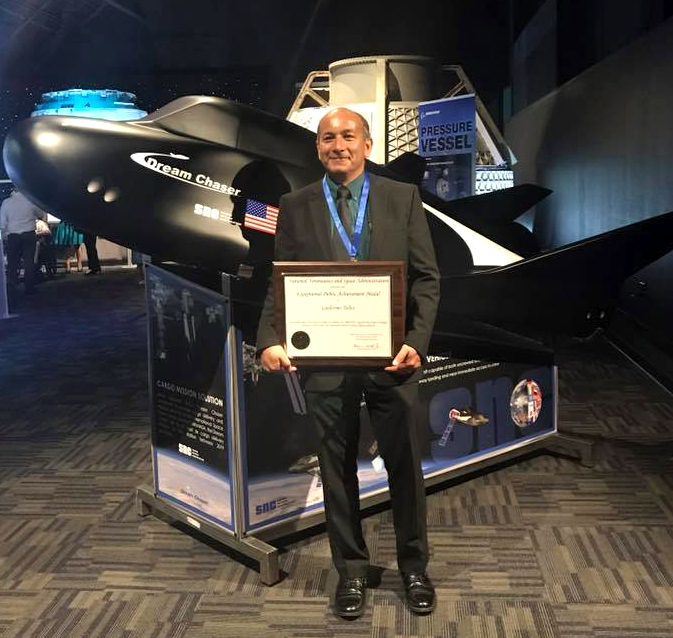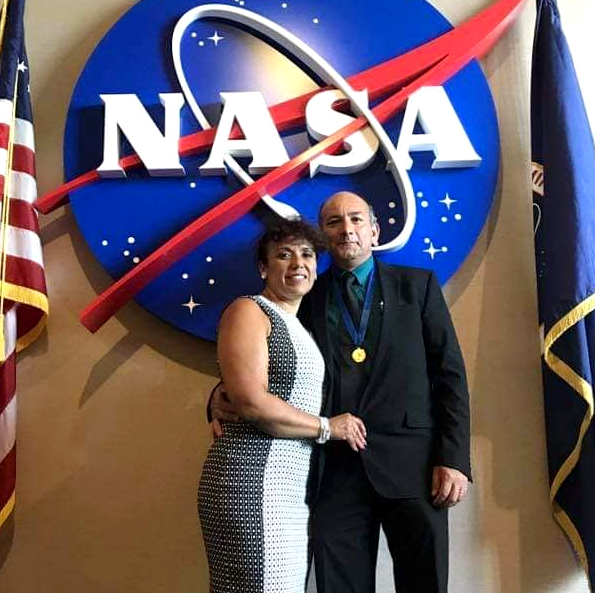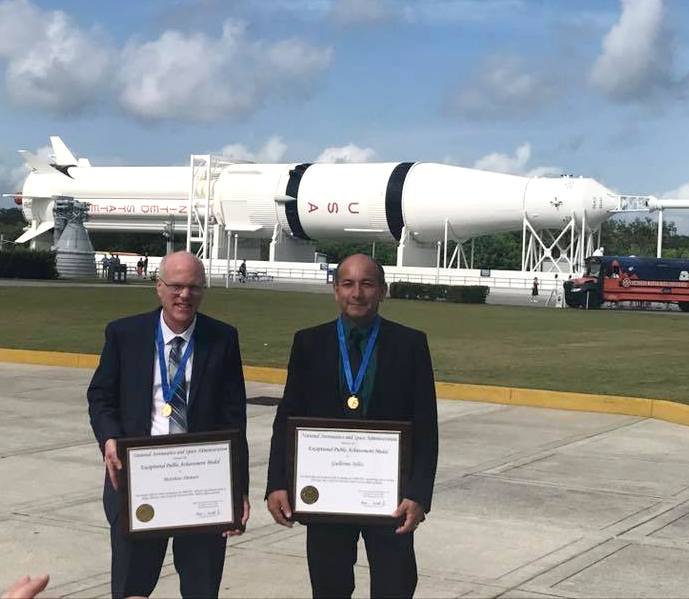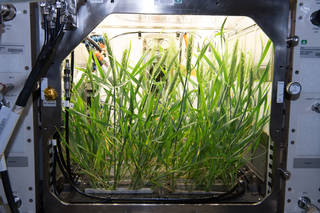
Guillermo Tellez, the lead mechanical engineer at Sierra Nevada Corporation, has been working on advancing food growth in space for many years with NASA. In fact, he just recently returned from Cape Kennedy, a place he visits periodically to do just that.
“I just came back from the Cape. It was very nice. I spent almost two weeks there – many meetings and supporting experiments, a little bit of everything,” Tellez tells Madison365. “There are few things that I do there. We have four different experiments we have in the station and we support them from the Cape.
“There is something called the POC – the Payload Operations Center where we do all the control for the experiments from there,” he adds.
For the past two decades, Tellez, a Madisonian for over three decades, has been designing equipment to grow plants in space. Because gravity is a constant downward force on Earth, researchers have taken advantage of the microgravity environment of the space station to achieve a clearer perspective of plant growth habits.
“As an engineer, I really like challenges in design and this job gives me the opportunity to work on very challenging things,” Tellez says. “For the last 20 years, I’ve been designing mostly equipment to grow plants in space. In the beginning, it was for experiments on the shuttle and then later for the station. In those 20 years, I’ve participated in a total of nine experiments – the design, construction testing, certification for flight for nine different pieces of hardware.”

While astronauts in orbit harvest and sample vegetables grown in space, scientists on the ground in Florida develop new space crops using the same equipment.
“Currently, we have three of them in the station and we’ve grown anything from wheat to radishes, flowers, lettuce … we have plans to grow chilis,” Tellez says. “There is a plant that the scientists use for gene transfer and it’s called Arabidopsis and we’ve flown many of them. I have also grown soybeans. The first experiment we didn’t germinate the seeds on-orbit but we flew a rose and a strawberry plant – two plants that were used for commercial applications.
“This company, they paid for using the hardware and they flew a rose and a strawberry and with the rose they developed – after they sampled how the rose smelled in space – a perfume based on that,” he added. “And they also developed a flavor based on the strawberry sample that they took on orbit. Those two were on the shuttle. The station was not ready yet.”
Originally from Mexico City, Tellez knew since he was young that he wanted to be a mechanical engineer and was very interested in space.
“No question growing up this was always something that I’ve wanted to do and I love what I’m doing,” Tellez says. “I was a big fan of the space shuttle from concept to launch and that really attracted me a lot.
“I was always attracted to space, in general. It was pretty much a dream to work on something related to space and it was also a dream to work at [Cape] Kennedy,” he adds. “Somehow it did happen.”
Tellez first made his way to Wisconsin when he followed his sister, Teresa Tellez, to Madison in 1988.
“I came here to visit and I got enrolled in school here and the rest is history,” he says, smiling. “It took a couple of years to get used to the weather up here, but it’s fine. I really love the city and the people and the environment here.”
Tellez, who had studied mechanical engineering at the University of Mexico, would go on to earn his master’s degree in mechanical engineering from the UW-Madison School of Engineering. Back in 1998, he first joined the space program.
“NASA had a commercial center within the university and that was my first job related to space. That was with the Wisconsin Center for Space Automation and Robotics,” he remembers.
A few years later, in 2007, he started a new job at Orbital Technologies Corporation. Sierra Nevada Corporation (SNC), headquartered in Sparks, Nevada, acquired Orbit Tech back in 2014, which is located on Madison’s far west side, just off John Q. Hammons Drive.
In 2017, Tellez, along with his colleague, Matt DeMars, was awarded the Exceptional Public Achievement medal by NASA at Cape Kennedy. The award commends “high-quality, innovative approaches that significantly or substantially improve operations, resulting in the advancement of the agency’s goals.”

Tellez and DeMars designed an experiment called the “Advanced Plant Habitat” plant growth system that brings more fresh food and advanced plant physiology research to space on the International Space Station(ISS).
“We took that project back in 2012 and it was delivered to NASA in 2017 and it is the largest habitat to grow plants in space in history,” Tellez says. “I was honored with the Exceptional Public Achievement medal for that.”

(Photo: NASA)
The Advanced Plant Habitat is a first-of-its-kind, enclosed plant growth system and environmentally controlled chamber that has its own lighting system. It’s about the size of a mini-fridge.
“The Advanced Plant Habitat is about the size of a 20-inch TV cube — the chamber where the plants grow is about 20” by 20” by 20”,” Tellez says. “The latest experiment was with radishes and it ended about a month and a half ago.
“And the crew was allowed to eat them. When we did the first crop in space, the crew was not allowed to eat anything because we didn’t know if something bad could come with the plants that they developed in space,” he adds. “We took many samples down and they were brought down and analyzed and determined that they were a lot cleaner than a crop from the ground. The very first thing that they ate was lettuce.”
Tellez makes it clear that he doesn’t work directly for NASA.
“We’re subcontractors. I get paid by NASA, but we’re not NASA employees,” he says.
Tellez has done quite a bit in his 20 years of Astrobotany, but he has one really big project on the horizon that he is looking forward to.
“One of my biggest goals at the moment, while everybody is getting ready to travel to Mars, and we have a project in which we have a module of an area to grow plants, so I’m working in that area and we’re designing and testing some systems that will be able to produce food aboard a spaceship as we’re traveling to Mars,” he says.



